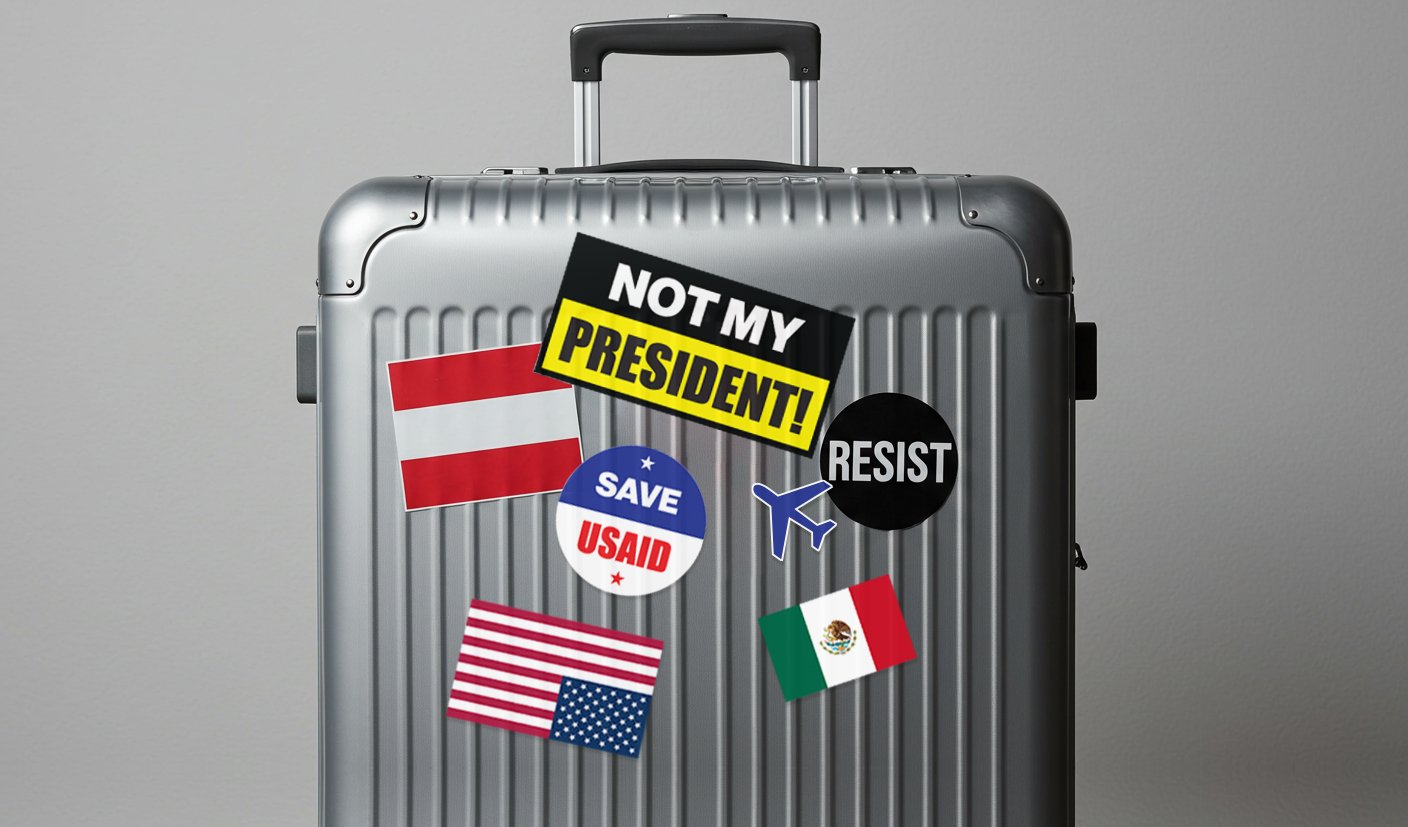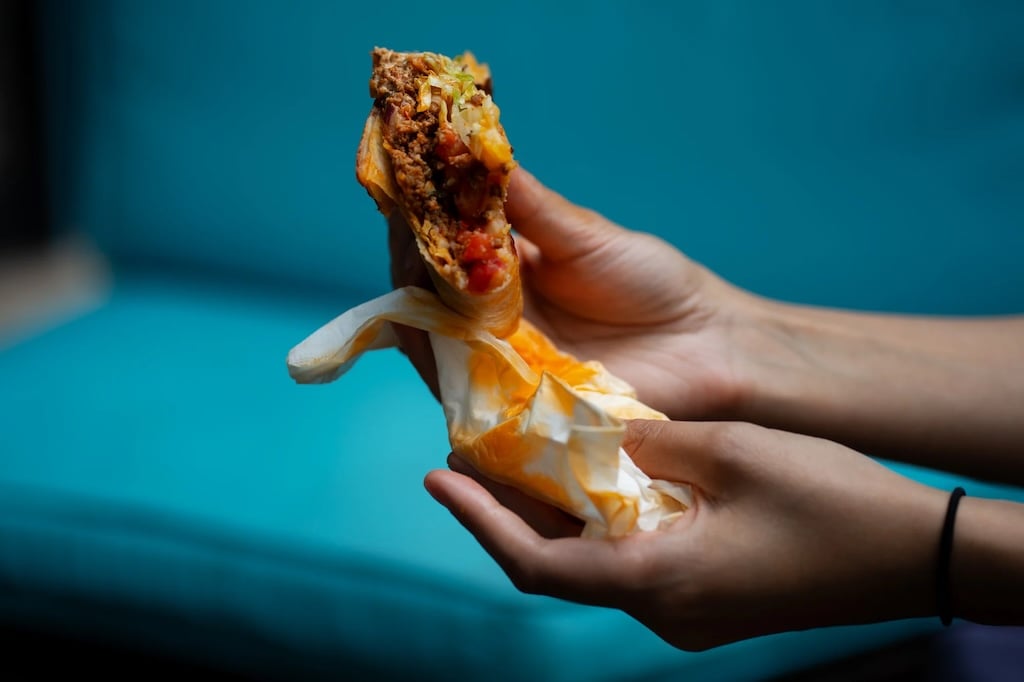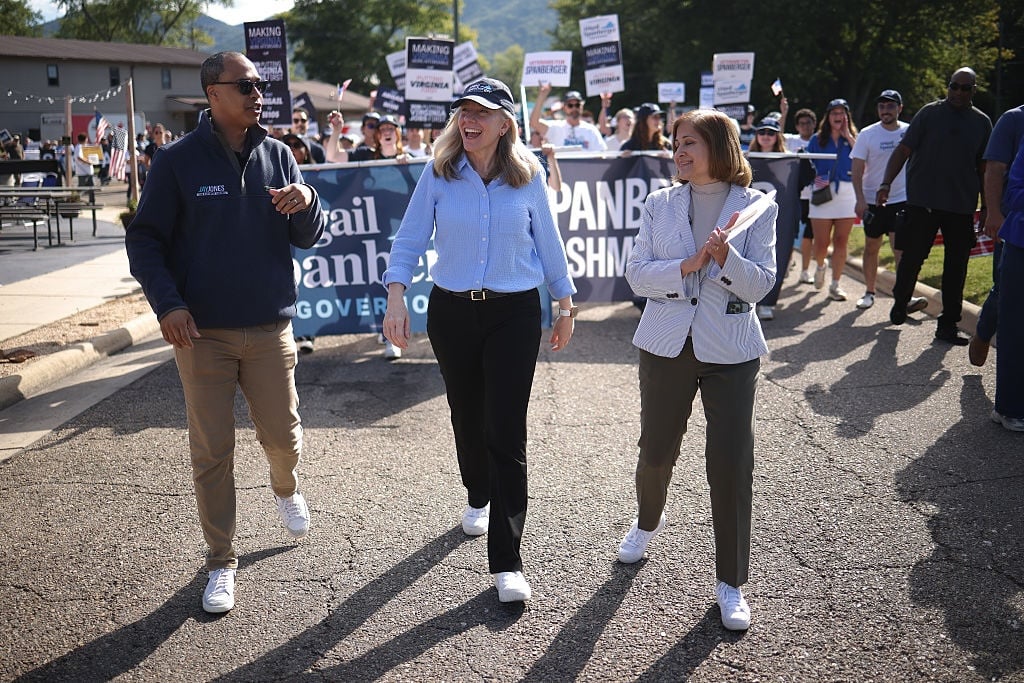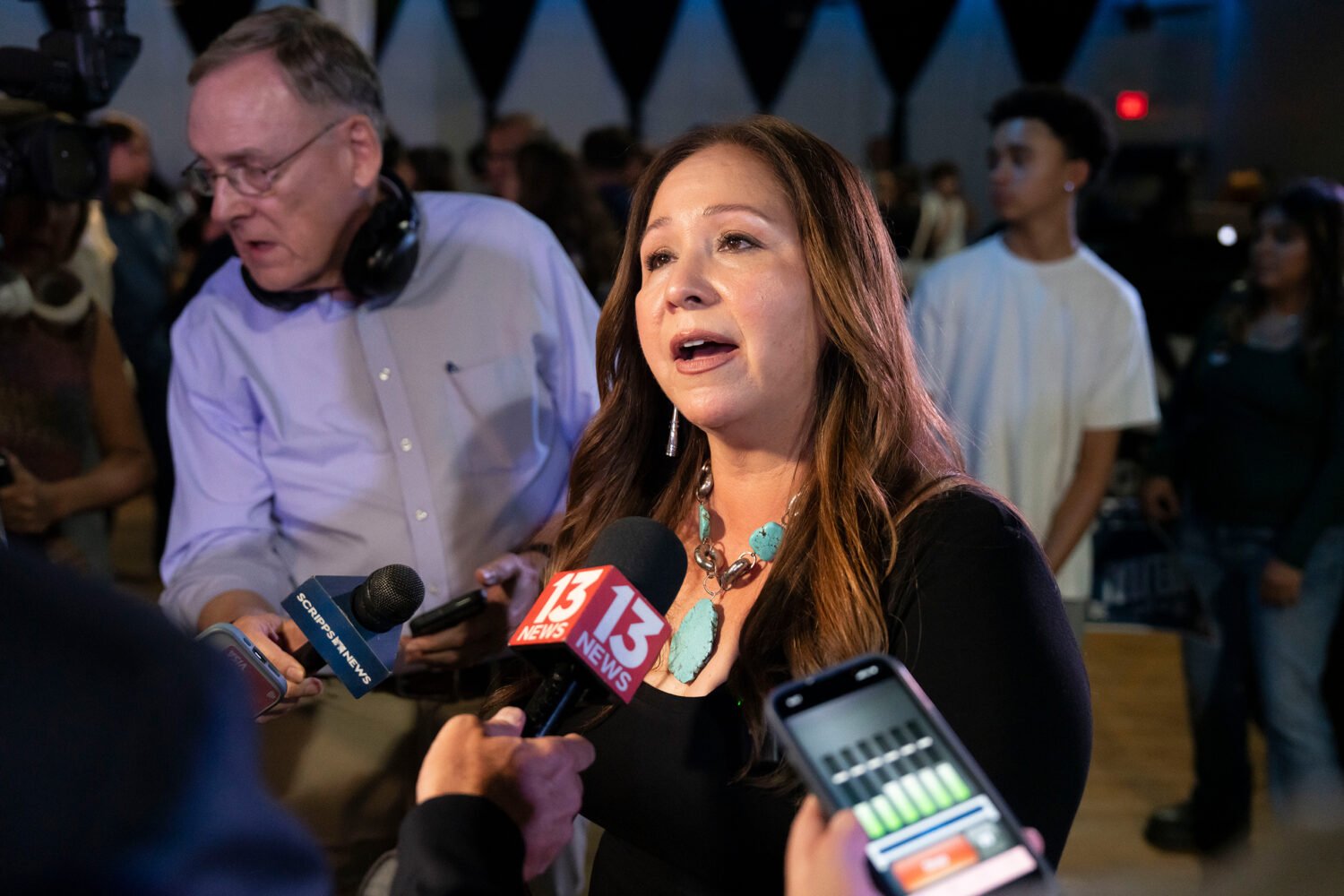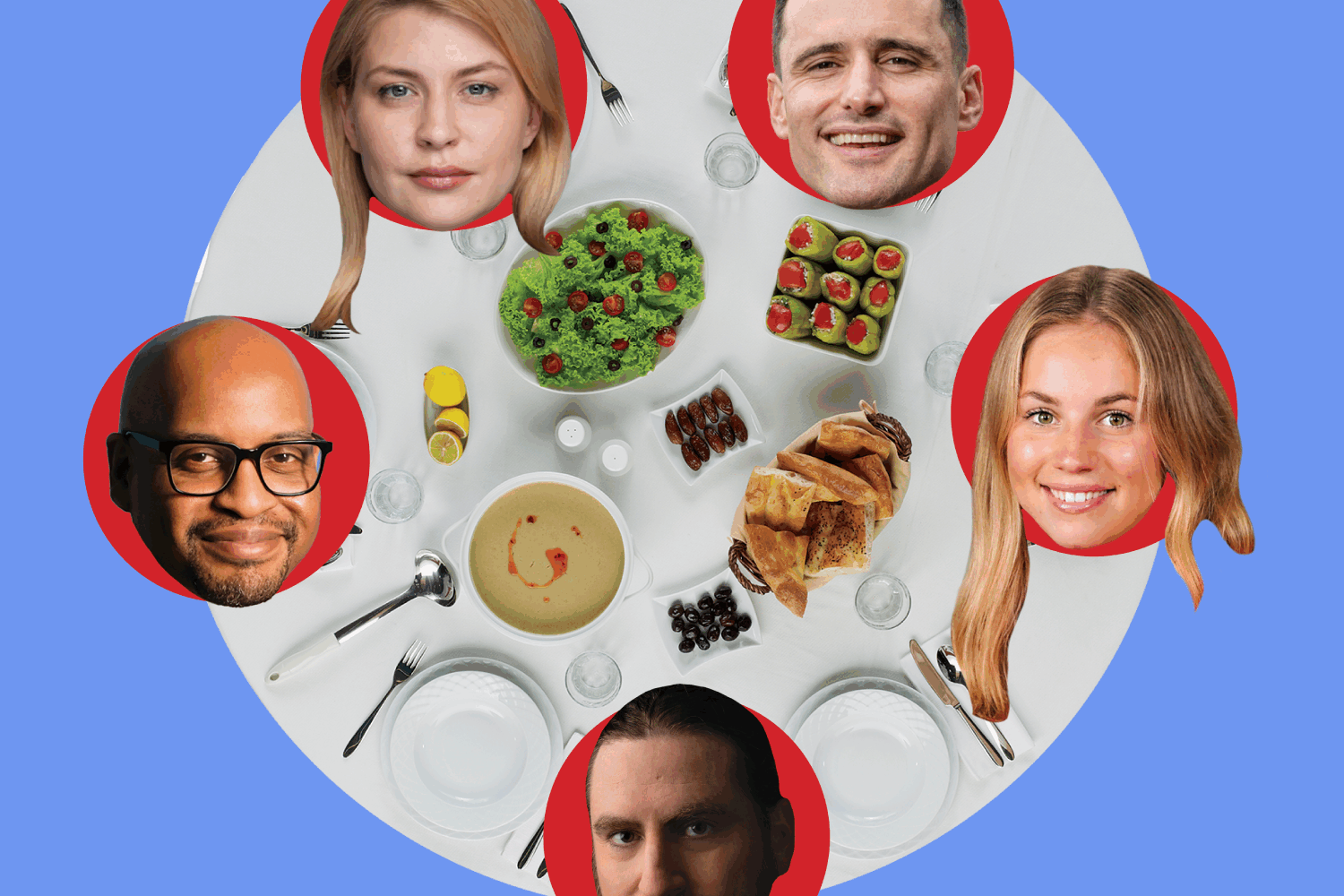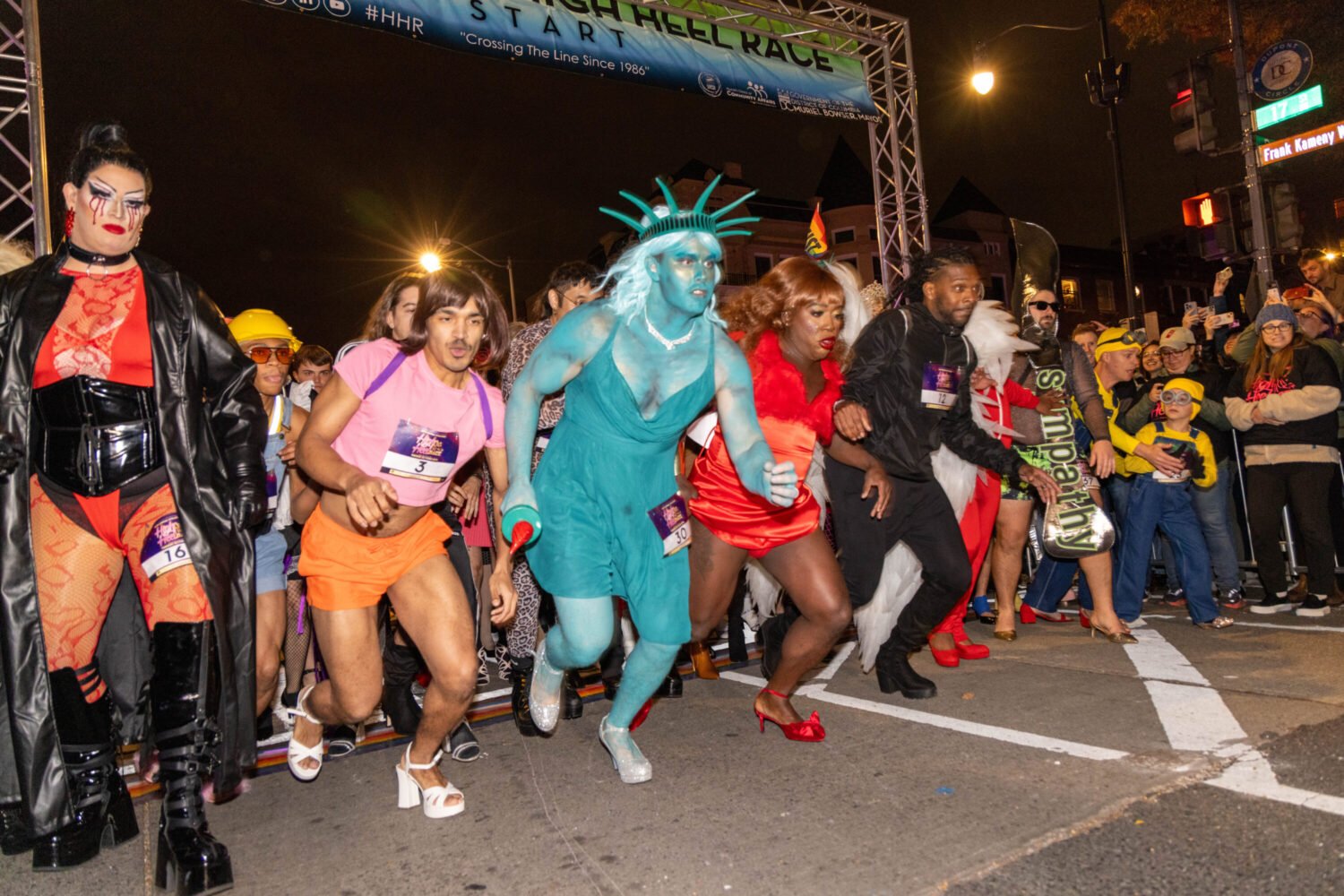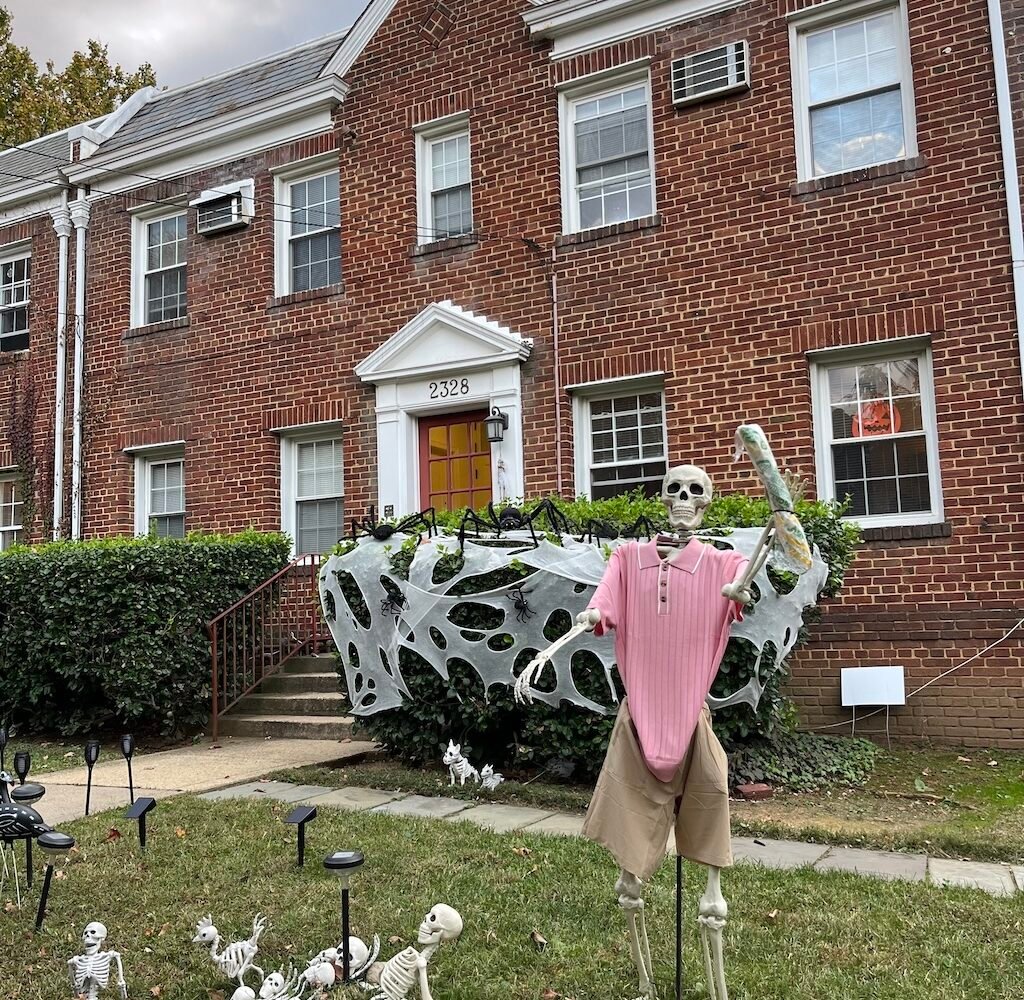A wooden bridge arches over the pond of water lilies. For a moment, you are transported to the garden in France where Claude Monet spent the last years of his life painting.
Frank Islam can’t afford a Monet—not yet. But the Indian-American entrepreneur can re-create the painter’s garden at his home in Potomac.
Islam has another pond—actually two—for fish that glitter in the sun. These are big fat koi from Japan. There are more than 200, which, at this size, cost $150 to $200 each. No wonder there’s a complex feeder system and water jets to scare away herons.
But all this, in addition to an air-conditioned gazebo, Italian statues, and a spouting water fountain, is just a start for Islam and his wife, Debbie, the passionate gardener. He has just sold his company, QSS Group, a technical-services firm in Lanham, to Ross Perot’s Perot Systems for more than $250 million.
So it’s time to upgrade to a home on nine acres in Norton, a neighborhood in Potomac.
Along with a new house, the Islams are building a garden five times as big as their current one. “We will have a seven-acre garden with formal and informal gardens, shade gardens, waterfalls, and a conservatory,” Islam says.
Their future neighbors, Ken and Kavelle Bajaj, belong, as does Frank Islam, to the growing club of Indian-American millionaires in the Washington region.
There are even billionaires. In the “wealth list” published in its June issue, Washington Life includes Rajendra and Neera Singh, pioneers in the wireless industry, in the category of those with a net worth between one and two billion.
Rich Indian-Americans in Washington have made their fortunes in finance, management consulting, and, increasingly, information technology and cellular and Internet services. They live in faux chateaux that do justice to a Kubla Khan fantasy. Most live in Potomac, McLean, and Bethesda.
The desis, as many Americans of Indian origin refer to themselves—desi is a word used for people from South Asia—have arrived. And many are living the American dream.
Next to Frank and Debbie’s future home, you’ll see majestic wrought-iron gates. They glide open to a road that leads, curving this way and that, to a Georgian-style mansion.
Ken Bajaj evidently has the Midas touch. In 2000 he took his Internet-services company, AppNet, public and then sold it to Commerce One for $2.1 billion. Next he founded DigitalNet Holdings, a provider of secure network services. He sold it three years later to BAE Systems for nearly $600 million.
The foyer of Bajaj’s home feels like a cathedral, with a chandelier that illuminates the floor, a mosaic of marble designed and flown over from Italy for them. Antiquities spill over in the succession of sitting rooms, their walls lined with paintings in gilded frames.
Ken and Kavelle Bajaj suggest I tour their home if I want to understand how they lead their lives as successful Indian-Americans.
“Look, you don’t need to talk to us about what we are or do. It’s all in our house. You will see how we combine the East and West,” says Ken Bajaj.
Up at the level of the chandelier is the prayer room. The most prominent room on that floor, it can hold a small congregation and houses the Sikh holy book, Guru Granth Sahib. On the walls are religious paintings.
Contemporary Indian art can be found throughout the house. But the painting that most signals their arrival is what the couple bought at Christie’s in London: a large mid-19th-century painting, by British artist Frederick Christian Lewis, of the royal court of an Indian maharaja.
Their American roots are on display in the library. There are porcelain figures—several of them Lladro—spilling out from every nook and corner. There are figures of a seated Abraham Lincoln and of George Washington crossing the Delaware and large depictions of the Capitol and the White House. Each piece has a flag; there’s even a large bronze eagle with a flag.
The full blast of American popular culture hits you in the basement. There’s a large home gym, saunas of various kinds, a whirlpool tub that can seat a dozen, a movie theater, and a whiskey cellar as well as a wine cellar. American memorabilia abounds, from a baseball signed by Babe Ruth to autographed photographs of Britney Spears and other celebrities.
“It is the American dream with Indian values,” Ken Bajaj says. “Our home, like us, is a blend of the two.”
The allegiance of the Bajajs to America is evident. One of their two sons, Rueben, is a volunteer firefighter; he joined the squad after September 11, 2001. Both children also respect their Indian heritage. “Our kids are born American, but the minute they see you they will touch your feet,” says Ken Bajaj. Touching the feet of elders is a sign of respect among Indians.
The embrace of Americana and the pop patriotism has less to do with showing off than with showing loyalty to one’s adopted country. It’s not unusual to see an American-flag pin on a lapel among desis in the world of business.
There’s also a fear of being taken for an FOB, or fresh off the boat. Besides living the American dream, there are other ways to blend in. Some Indians have adopted American first names. They have also adopted the clothes: Saris, increasingly, get less of an airing.
“If you become wealthy and sophisticated, you embrace the American wealth culture,” says Frank Islam.
The Bajajs could be called the new maharajas, Indian-Americans who have the money to satisfy every whim. For most, it was all uphill getting there. Like immigrants who came before them—the Irish, the Italians, the Asians—most Indians came to the United States with empty pockets and dreams of a better life.
“We came with $8 in the late ’60s—that’s all the foreign exchange the Reserve Bank of India would allow,” says Rama Deva. She and her husband, Arun, live in a mansion in Potomac with a landscaped garden with stone sculptures shipped from India. Arun was a partner at Touche Ross & Company (later Deloitte & Touche) before he started his own accounting and consulting firm and moved to Washington 15 years ago.
Spotting an Indian in Washington was a rarity back in the 1970s. Today, it is hard not to. There are more than 100,000 residents of Indian origin here. This spring, the area got its tenth temple, the 28,000-square-foot Hindu Temple of Metropolitan Washington, in Adelphi.
Going Mainstream
It is not just the numbers that matter. The profile of Indian-Americans in Washington has changed over the past decade. Not only have many more entered the realm of the rich, a number have made their way onto social, cultural, corporate, and political ladders. A few—such as Rajendra and Neera Singh, Sharad and Mahinder Tak, Ranvir and Adarsh Trehan, and Arun and Rama Deva—have made it onto the Social Register, within air-kissing distance of the capital’s powerbrokers.
The billionaire Singhs, who live in Mount Vernon, are shy about their wealth and lifestyle. They’re among the more admired in the Indian-American community because of all they’ve done. Rajendra sits on a number of boards, including the US Chamber of Commerce and Johns Hopkins University.
Sudhakar V. Shenoy, CEO of Information Management Consultants, was recently named one of the top 25 most influential people in the Washington high-tech industry by Business Forward Magazine. The ebullient entrepreneur was chair of the Northern Virginia Technology Council from 2002 to 2005. Shenoy is also president of TIE-DC, a group of more than 500 area entrepreneurs.
“Indians need to be more visible and certainly more involved with philanthropy,” says Shenoy.
An increasing number of Indian-Americans from the corporate world are gravitating toward cultural boards. Ashok Kaveeshwar, a former CEO of Hughes STX Corporation, was vice chair of the Wolf Trap board for six years until 2005. He is also involved with the Freer and Sackler galleries.
Mahinder Tak, a radiation oncologist and retired US Army colonel, is another player on Washington’s cultural scene. Her home in a wooded area in Bethesda, where she lives with her entrepreneur husband, Sharad, houses arguably the largest personal collection of modern and contemporary Indian art in the United States. Last year Art & Antiques magazine listed her among the top 100 collectors of art in the country.
The Tak home has for years been a beacon for visiting artists from India, many of whom have exhibited their work on its walls. Mahinder has spurred many Indian-Americans to become serious buyers of Indian art. Lately, she has extended her repertoire to American and European artists, and Indian-Americans are following her down that path as well.
Mahinder’s influence is not limited to the Indian-American community. Many Americans, including academics and buyers, have been invited to see her collection.
“I would like Westerners to understand India’s rich art,” says Mahinder, who is on the board of trustees of the National Museum of Women in the Arts. Egged on by Mahinder, the museum established a chapter in India in 2005. She helped organize an exhibition held there, “The Narrative Thread: Women’s Embroidery From Rural India.”
A group of Indian-Americans, spearheaded by Rama Deva, a collector of contemporary Indian art, lobbied the Freer and Sackler galleries to give two rooms to a permanent display of art from the Indian subcontinent. Other Indian-Americans are trying to raise the profile of Indian performing arts, literature, and cinema by working with organizations such as the Asia Society and the Library of Congress. Deva and her husband have sponsored seminars on India at universities around the region.
Americans of Indian descent—some first-wave immigrants but mainly their children—are becoming more politically active.
Washington may not have the equivalent of Bobby Jindal, who was recently elected governor of Louisiana. But Maryland does have Kumar P. Barve, majority leader in the Maryland House of Delegates. Elected in 1990 and reelected three times since, he represents part of Montgomery County. His maternal grandfather, a school administrator, immigrated to the United States in 1911. His father, an architect, came in 1957.
More Americans of Indian heritage are affiliating themselves with political parties. Entrepreneurs in particular have realized the value of lobbying. And political candidates—no doubt aware of the fundraising potential—are seeking out Indian-Americans.
In her Bethesda home, Mahinder Tak recently hosted a reception for Hillary Clinton. The Republican Party also enjoys the support of Indian-Americans, especially among businessmen.
Americans of Indian origin have become more visible on Capitol Hill and in the White House. Manpreet Singh Anand works for Congressman Tom Lantos, chair of the Foreign Affairs Committee. Neera Tanden is Senator Clinton’s presidential campaign policy director. Natwar M. Gandhi is the District of Columbia’s chief financial officer.
Hyphenated Identity
Indians began to come to the United States in the late 1960s. It was a trickle before President Lyndon Johnson changed the immigration law in 1965, increasing the limits for non-Europeans.
Many of the Indians who came to America would have had less opportunity in India; at the time, social hierarchies prevented people from achieving more success or wealth than that of their parents.
Still, most Indians did not come to stay. They came to study, save money, and return home with the wherewithal for a better career and life. Many Indian families never made this country their home because they feared their children would marry non-Indians. They lived each year as if it were their last here, bent upon saving enough to build a house in India. “They would earn in dollars but think in rupees,” says Rama Deva.
Deva came to the United States in 1969. “We were the go-backers,” she says. “We always talked about moving back before the formative years of our two children.” But the Devas stayed, applying for US citizenship in 1978 when they become eligible.
The first generation consisted largely of engineers, physicians, accountants, and teachers. Like many first-wave immigrants, they kept to themselves. Once you crossed the threshold of the house in Rockville or Fairfax, you were in India.
Their children often got stuck between the two cultures. They were referred to as ABCDs—American-Born Confused Desis. The ABCDs talked a lot about roots and identity and found it difficult to lead double lives, especially when they fell in love with pardesis, or foreigners. There was a film called ABCD made by Krutin Patel, an Indian-American, in 1999.
The slightly pejorative term had currency until a few years ago. The C seems to have been dropped by an increasing number of young Indian-Americans.
Manpreet Singh Anand, 31, who works on the Hill, has never identified with the ABCD label. His parents are from the Punjab, a state in northern India. He was born and raised in Texas and went to graduate school at UC Berkeley.
“For me it was not so much confusion as adaptation to my Punjabi culture. I am more Punjabi than Indian and more Texan than American,” he says, adding that he, like many others in this country, is an amalgamation of cultures.
The hyphen between Indian and American has begun to fade. While first-wave Indian-Americans tend to think of themselves as Indian, a growing number of those born here after the 1970s prefer to be described as Americans of Indian origin.
Sometimes the generational gap can be wide. The older generation came with nothing. They had time for little else other than making enough money to give their children the best education. They hung on to the cultural values and lifestyle they had brought with them.
The next generation isn’t following the same path. Says Manpreet Anand: “My parents’ generation was all about being engineers or doctors. My generation has diversity—I can go into different career paths.”
Neal Katyal’s parents wanted him to be a doctor. He chose law. The legal profession was not considered ideal by Indians. Doctors and engineers were the professions of choice because they had the greatest employment potential at the time.
Brought up in and around Chicago, Katyal, now a professor at Georgetown University Law Center, recently won the landmark Hamdan v. Rumsfeld case in the Supreme Court, one that challenged military tribunals at Guantanamo. Last year the newspaper Lawyers USA named him Lawyer of the Year. Another sign of arrival: his appearance on The Colbert Report.
Some young Indian-Americans are going down even more atypical paths. Princeton graduate Rajiv Vinnakota gave up a career as a management consultant to start the first urban public boarding school in the States, Schools for Educational Evolution and Development, or SEED. Vinnakota, like college classmate Eric Adler, with whom he founded SEED in 1998, wanted to leave a better “social footprint.” Widely praised, the school has changed the lives of hundreds of minority children by enabling them to go to college.
The children born in this country are more “comfortable in their skin,” says Rakesh Gangwal, 53, a former CEO of US Airways who lives in McLean. “As a first-generation immigrant there is a deeper hunger. When I first came here, we did not have the same social fabric or support. You had to quickly become self-reliant. The second generation doesn’t have the same hunger. There is no fear. This is their country.”
Had it not been for the resilience of the first wave, the next generation would not have had it so easy. “We paved the way for them,” says Dr. Jyothi Gadde. One of the top allergists in the region, she has offices in Warrenton, Gainesville, and Fairfax. “The discrimination was subtle. We were good students with excellent scores but could not get residencies at the best universities. Now our kids have no trouble getting into top places like Johns Hopkins and Harvard.”
Reagan Evolution
Indian-Americans in New York used to look down upon their poorer cousins to the south. The money was in Manhattan—with investment bankers, CEOs, and hedge-fund managers—or with those who had made it big in California’s Silicon Valley.
What changed it all was federal outsourcing, triggered by Ronald Reagan’s decision to shrink the federal bureaucracy. The government became a honey pot. Indian-Americans began to gravitate to the capital to make their fortunes providing services to agencies such as the departments of Defense and Homeland Security.
Sharad Tak, the entrepreneur who lives in Bethesda, was the pioneer. In 1974, he lobbied for Indian-Americans to be considered minorities, enabling them to take advantage of incentives given to minority-owned businesses.
Tak’s company, ST Systems Corporation, provided programming and systems integration to agencies including NASA and the Federal Aviation Administration. He brought in other Indian-Americans to work with him, including Frank Islam, the man with all those koi fish.
“Sharad was my boss,” Islam says. “He inspired my entrepreneurship.” In 1991, Tak sold his company to Hughes Aircraft. A serial entrepreneur, he then ventured into television and communications and, more lately, paper mills.
Other big players came. In 1989, Charles K. Narang founded NCI. Today, the company has 1,900 employees and is one of the leading providers of information-technology services to the federal government. In 2004, the Air Force awarded NCI, headquartered in Reston, a $9-billion contract. Millions more in contracts with the FAA, North American Aerospace Defense Command, and other security agencies continue to pour in.
The real influx began after 9/11, when Homeland Security started giving out contracts and young Indian IT experts and software specialists flocked to the region, especially Fairfax County. A Little India emerged in Fairfax. Today there is a vibrant and diverse community of desis.
Ashok Bajaj opened the Bombay Club a stone’s throw from the White House in 1988. His break came in 1993 when President Bill Clinton dropped in—and then continued to come with his family. Emboldened by the presidential visit, Ashok opened another restaurant across the street and called it the Oval Room.
Bajaj now has six restaurants—and two more planned—that feed power brokers from the Hill, K Street, embassies, and the White House. But he had a hard time when he first came to Washington convincing a landlord to give him space.
“Nobody thought there was anything like fine Indian cuisine. I had to fly my landlord to London to show him the kind of restaurant I wanted to have,” says Ashok Bajaj, who is no relation to Ken. Ashok is convinced that the taste for Indian cuisine developed with the changing perception among Americans about India and Indian-Americans.
For Anil Revri, who moved here in 1992, Washington is now a good place to be, although success took its time coming. Born in India, the 51-year-old artist has made a name for himself here. While his paintings—many of them innerscapes and geometric abstractions that sell for $20,000 to $60,000—occupy a pride of place in many Indian-American homes, more than half of his clientele is from outside the Indian-American community. He is the only Indian artist to have had a solo show at a major American museum.
Living in the States, the painter says, made him more aware of what is Indian in him and in his work. But home is here.
“While living in India I never thought about what it was to be an Indian; you just were. But here you are slotted in people’s perception as an Indian. It makes you think about what being an Indian means,” Revri says.
The new face of the Indian-American is evolving. Increasingly assimilated, they have begun to put down roots. Dr. Sanjay Prasad, an neurotologist, lives with his wife, Deepika, and their four children in Potomac. Their tennis court is not just a status symbol: The family plays together on weekends. They also have a music room, and their teenage daughter Meghna has just held her first concert and recorded a CD of self-written songs. Home for them is right here. But the pull of India is strong: The walls are full of contemporary Indian art.
Rooted in Tradition: Prayer rooms, Hindu festivals, arranged marriages—increasingly done online—are ways Indian-Americans stay connected.
Royal Life: Some Indian-Americans have custom cars, houses with ballrooms, and paintings worth a million dollars. But the best status symbols are things money can’t buy—such as royal blood.


